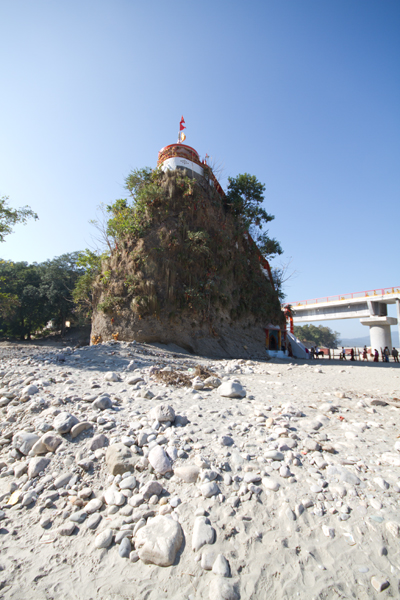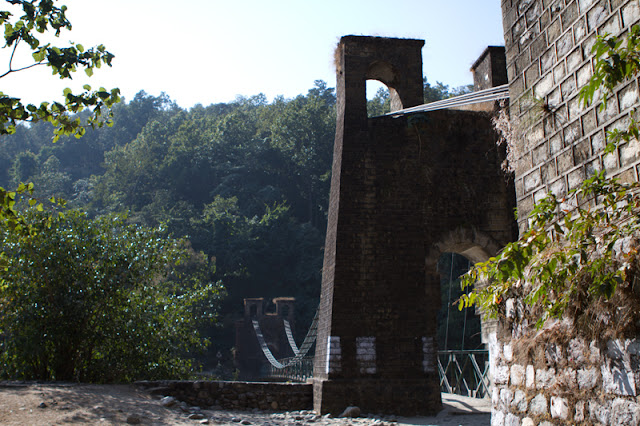Undoubtedly the highlight of my expectations of India is my planned near-week safari in the Jim Corbett National Park. The first national park in India it was renamed from the Hailey National Park – after the British governor that created it in 1936 – in honour of the great man-eater hunter turned preservationist a year after Jim Corbett’s death in 1955. Although Koenig had said that on my arrival in Dehradun that staff there would help me organise such excursions, knowing that entry into the park is limited I had decided not to risk that as a last minute sorting out and had arranged a package before I left.
I eventually booked my trip through Indian Nature Tours and the proprietor – an internationally respected Naturalist by the name of Manoj Sharma. It was to start with a couple of nights stay in a hotel, followed by three nights inside the park. Papiya at Koening was able to help me out though by booking the train for me. So after my final day of After Effects (video effects software) training I returned “home” to double check my packing and what I was going to leave in Rick’s room whilst away. I’ve got a lot of stuff with me and didn’t need to carry unnecessary things with me, like gloves and other winter woollies. The Koenig taxi driver came for me at 9:45pm and we headed to the station to catch my 10:50 overnight train to Haldwani. We checked the carriage/berth allocation chart posted up in the station and found my name against Cabin A in the 1st class section.
With my little rucksack full of clothes for the week in one hand, my video backpack full of video camera, lenses, chargers and other bits & pieces of entirely necessary gadgets and my strappingly large tripod strapped to its side in my other hand and with my D-SLR torso bag strapped across my chest, I squeezed down the narrow corridor and into Cabin A. A middle-aged Indian lady absorbed in her newspaper acknowledged me as I clumbered into the cabin, squeezed my bags under the bottom bunk opposite hers, removed my trekking boots and climbed up onto the top bunk. There was a sheet, a blanket and just a small pillow so I used my special forces jacket (which I forgot to mention in my luggage. It’s great and has large pockets and these were also stuffed with various gadgets – my small documentary camcorder, Victorinox Swiss army knife, water purifying bottle, phones ( I now have three; UK, Indian – complete with Hindi/English keypad, and my “throw away” mugging phone), MP3 player, passport,wallet, etc) to bulk up my head support. I was quickly followed in by a young Indian couple – tourists from Mumbai who it turned out were also going to the JC reserve for a few days at the end of their North Indian holiday.
Settling down to try & sleep, I used my moulded in-ear plug-phones to both listen to some music and drown out the train & air-conditioner noise to a partially successful degree. As my stop was the last but one stop I set both my phones on to vibrate-only alarms half an hour before it was due in at 6:40am the next morning. I had one in each buttoned breast pocket of my shirt so that whichever way I ended up lying at least one would be next to me and should hopefully wake me up. In the rather anxious waiting time between evening dinner and being taken to the station – for no real reason other than another lone venture into uncertainty I guess – through Manoj, I had exchanged phone numbers of the driver who would collect me from the station to take me to the hotel. In what I am now used to as true Indian taxi driver fashion, at 5am considerably an hour earlier than my due arrival he phoned me to say he was at the station and would meet me outside the station when I arrived. Thanks!
Not only had we left bang on time, we arrived bang on time and I dragged myself and my gear out onto the platform. Ignoring the various baggage carriers request to carry my bags I proceeded to load myself up and hike down the platform and out past the taxi touts to find a good-looking sunglassed Indian guy standing next to a safari jeep who greeted me by name and I climbed aboard for the 70km drive to the hotel. Although a little less chaotic, the traffic, smell and “city sights” were depressingly familiar. When we left the bright lights behind we drove along very straight roads, past kids of all ages walking, bicycling, multi-loaded onto school run tuk tuks and motorbiking – some three-up – to school. Apart from the modes of transport – how often do you see British kids walking miles to school, especially past banana trees – just the same as British kids going to school. Fooling about, pushing each other into the traffic, dragging bags, usual sort of thing. Education education education is all around you here. Well over 50% of billboard advertising is for schools, colleges or tuition of one sort or another. The windows of the book shops I’ve seen are stuffed with all sorts of physics, maths & other school books.
The scenery beyond the road was of flat on one side and after a little flatness, the start of the Himalayan mountains on the other. Well foothills probably, but really serious hills. Went up a hill and came down a mountain kind of serious. It reminded a little of the Colorado plains I’d seen when I was working in Denver, ooh 15 years ago now – wow so long. Flat plains and then suddenly woomph, serious hills/mountains. In Colorado it almost seemed to be flat and then suddenly a wall of mountain, no gradual lead in. ( See here for an example)
One thing that struck me and I remarked to my driver was the pace of traffic here. Even on the country open road, although we were constantly overtaking busses and the numerous large TATA trucks – which I still haven’t got round to being able to take any pictures of – we were only doing about 50km/h. OK the roads are not exactly smooth but still I was surprised. After an hour and a bit we got into national park territory. Not the park itself but its periphery with signs imploring you to give way to wildlife with pictures of large elephants and other “wildlife is good” signs. The trees here, I don’t know the name, are predominately ones with massive leaves that are used as fodder. I know that large leaves are nothing particularly unusual, banana leaves for instance are huge, but most large leaved plants I know are more what I’d call plants or shrubs. The leaves on these trees are by far the biggest conventional tree leaves I’ve seen. Large ovals – well leaf shaped – some of them almost a metre in width. For a tree to have leaves this size, all over, all the way up to the top of it’s 50ft+ height is pretty awesome.
Soon enough we pulled into the Wildcrest and I was nicely surprised. Very nice. Very nice indeed. I’d seen a few photos on their website but they need to redo it because the photos and whole site do not do it justice. I’m not a hotel connoisseur by any means and so have no real idea of star ratings but this seemed to me to be a 5-star setup. There wasn’t much planned for me on this first arrival day so I after checking in and being shown my room, I unloaded, refreshed myself with a quick shower and went for a gorgeous and welcome breakfast out on the lawn in the hot sun.
One of the hotel head staff then offered to take me on a walk in the surrounding area. First we went down to the river and I asked him when he’d last seen a tiger. “In Delhi, at the zoo.” “You haven’t ever seen any in the park?” “Never been, always too busy working. Besides why would I want to see a tiger?” He then proceeded to tell me about a recent attack last week when a tiger attacked a group of three men on the main road at about 6am and they were only saved from death when a bus happened to come around the corner and scare off the tiger. So, I kindof see where he’s coming from! However when he offered me the chance to take a bus to go see a temple in the river or walk it was a bit odd that he was noticeably happy that I’d decided walking would be a much better option. So anyway we walked.
The river is an all-year river, not just a monsoon river,but it’s normal size compared to what you can see it’s monsoon extent must be is really quite small and the temple whilst totally accessible now is completely cut off, but not submerged, by a roaring torrent come monsoon time. The park itself is shut during the monsoon season of June to September as getting around is simply not possible with so many of the roads being cut off and washed away by the rains.
After seeing the temple, I returned to the hotel for lunch and then spent the afternoon trying to film the langurs playing around my part of the hotel. My first safari drive was to be at 6:30 the next morning. I had hoped for a spectacular sunset but it was a damp squib and anyway not visible so I thought I’d try for a sunrise and got up about 5:00am but again it wasn’t very exciting.














































No comments:
Post a Comment